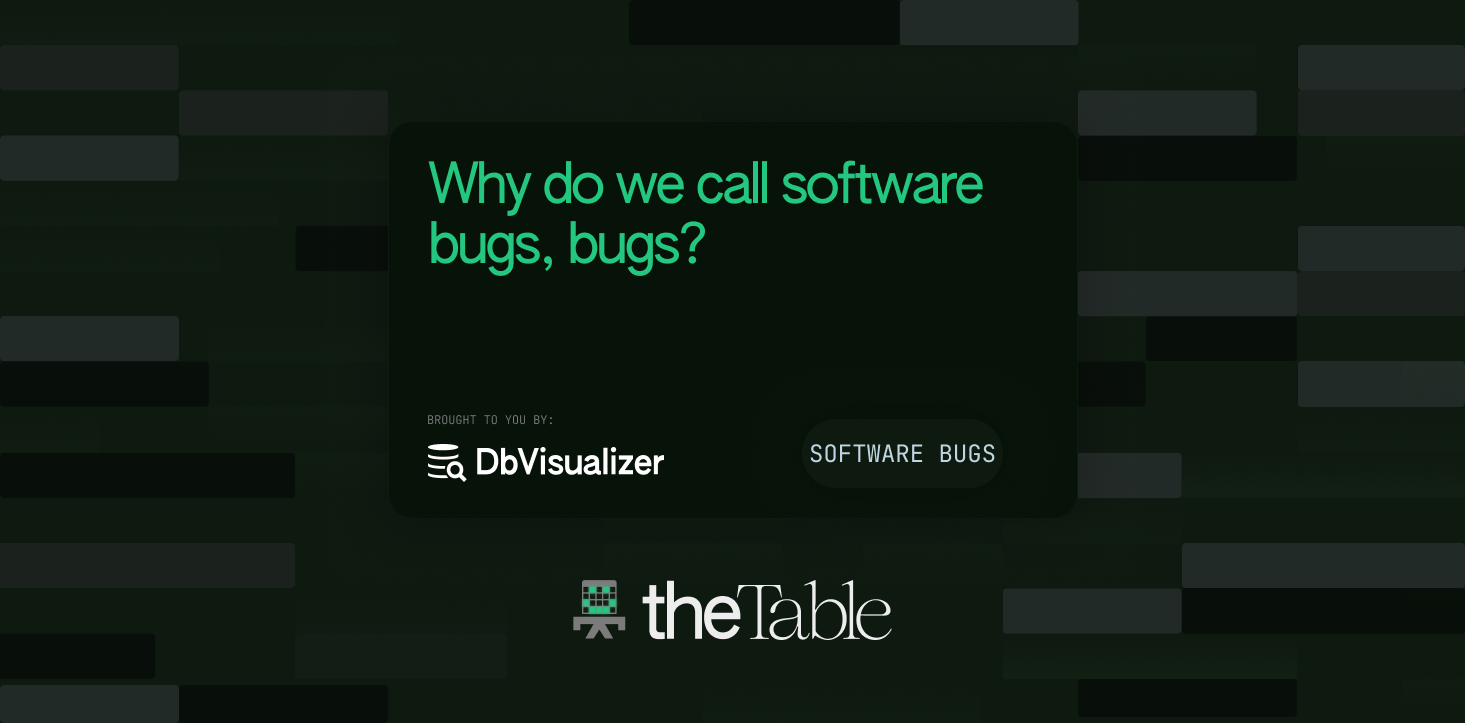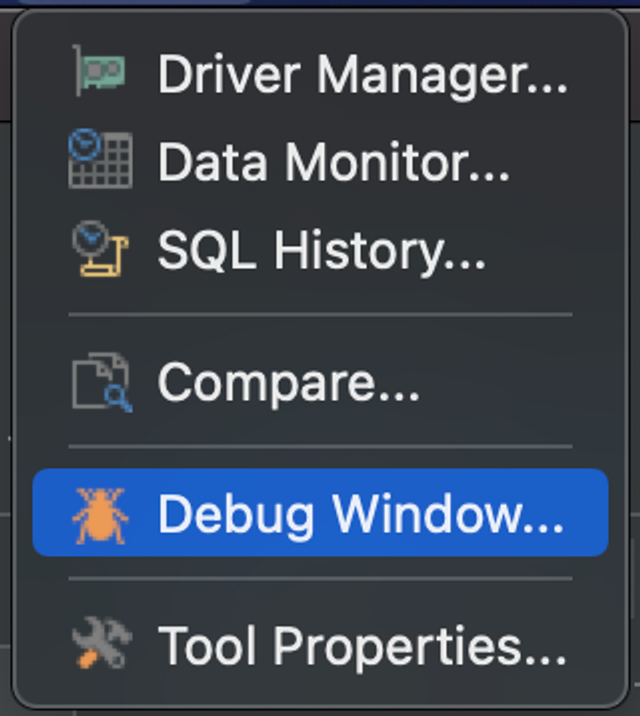Why do we call software bugs, bugs?
 DbVisualizer
DbVisualizer
In the world of computing, the term "bug" is a commonly used term that refers to a flaw or error in a software program. Bugs are usually classified into categories such as software bugs or technical bugs. But why are bugs called bugs? This terminology has a fascinating history tied directly to the dawn of the computing age.
The Origin of the Term "Computer Bug"
The term "computer bug" originated from a real-life insect. The first recorded instance of a bug causing a technical malfunction occurred in 1947 when engineers working on the Mark II Aiken Relay Calculator, an early computer at Harvard University, found a moth lodged in the machine's hardware. This moth was causing an electrical fault, disrupting the system's normal operations.
Grace Hopper, a rear admiral in the U.S. Navy and a computer scientist, is credited with popularizing the term. She was part of the team that discovered this moth. The team removed it and taped it into the computer's logbook with a note stating, "First actual case of bug being found." The image of this logbook page can be seen at the Naval History and Heritage Command.
The concept of a "bug" in the system, however, predates this incident. The term "bug" has been used in engineering and electronics for a while before the era of modern computing. Notable inventor Thomas Edison is known to have used the term "bug" to describe a technical malfunction in his works in the late 19th century, as noted in Princeton's Thomas Edison Papers.
Common Misconceptions
There are several common misconceptions about the term "bug" and its origin. One myth is that the word originated from the noise on a telephone line, supposedly reminiscent of the sound a cockroach makes. This explanation, however, has been largely debunked. Another widespread misconception is that the term bug is derived from "bugbear" or "bugaboo", words that historically referred to malicious spirits or hobgoblins believed to cause problems with machinery. While this is a compelling etymological tale, there is no solid evidence linking the term "bug" in the technological context to these mythical creatures.
Bug vs Insect
In a playful turn of semantics, it's intriguing to compare the common characteristics of software bugs and insects. Just as an insect can infiltrate your home, a software bug infiltrates your code, often unnoticed. Insects can cause varying degrees of damage, from minor annoyances to significant destruction - much like bugs in software. However, the comparison ends there. While insects are a part of nature's design, software bugs are unintentional flaws resulting from human error in the design or coding process.
Debugging Software
Since the first moth incident, the process of locating and correcting these code errors has been aptly named "debugging". Debugging is a critical part of the software development process. Developers use various techniques and tools, such as print statements, logging, interactive debuggers, and more recently, sophisticated integrated development environments (IDEs) to find, isolate, and fix these bugs.

Debug window.
Debugging can be a complex task. It often involves understanding the intricacies of the code, the interdependencies between different components, and the desired vs actual outcomes. Nonetheless, the importance of this process cannot be overstated, as the quality, functionality, and reliability of software heavily depend on the effective removal of bugs.
When working with databases, debugging SQL can often be a challenging task. DbVisualizer can significantly aid in this process. One of the features of DbVisualizer is its Debug Window found under the Tools menu. This window provides insight into the activities within DbVisualizer and the JDBC drivers in use, helping users identify potential bugs or issues.
If you are looking for an easy and powerful SQL client and database manager, then you've got to try DbVisualizer. It connects to nearly any database.
Conclusion
The term "bug", in the context of software and technology, may initially seem peculiar. Yet, its origins demonstrate a colorful and historical connection to an actual problem that affected the birth of the computer age. In today's world, "debugging" has become a staple in software development, highlighting just how much the discovery of that first "computer bug" has influenced the world of technology. Despite its troublesome connotations, the term "bug" brings a certain charm to the complexities of software development, reminding us of the human element in this highly technical field.
Despite the varying misconceptions, bugbears or no bugbears, the journey of debugging continues as an essential part of our technological world.
Despite the varying misconceptions, bugbears or no bugbears, the journey of debugging continues as an essential part of our technological world too - debugging lets us identify and remove bugs in their software, which, just like bugs in nature, can cause varying degrees of harm.
Dive into our blog to learn more about software, bugs, and the database world, and until next time!
About the author
The Table by DbVisualizer is where we gather together to learn about and simplify the complexity of working with database technologies.
Subscribe to my newsletter
Read articles from DbVisualizer directly inside your inbox. Subscribe to the newsletter, and don't miss out.
Written by

DbVisualizer
DbVisualizer
DbVisualizer is the database client with the highest user satisfaction. It is used for development, analytics, maintenance, and more, by database professionals all over the world. It connects to all popular databases and runs on Win, macOS & Linux.